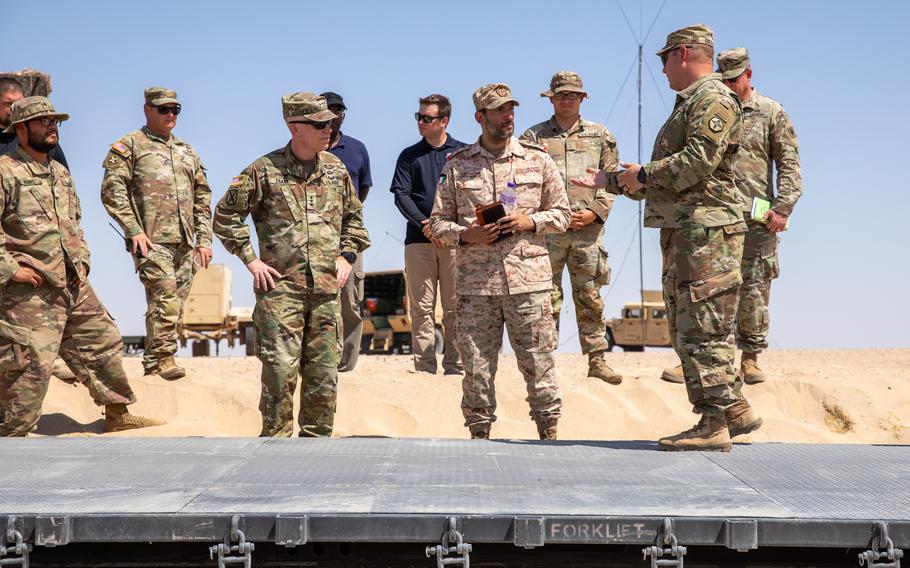
Soldiers are briefed before a semi-autonomous vehicle demonstration at Camp Buerhing, Kuwait, on July 25, 2023. The 371st Sustainment Brigade was testing the vehicles, which could form Army convoys in future war zones. (David Campos-Contreras/U.S. Army Reserve)
U.S. soldiers deployed to Kuwait are testing semi-autonomous cargo trucks with an eye toward eventually using them to create convoys in war zones and put fewer drivers in harm’s way, according to Army officials.
The driverless trucks cruised through an off-road course Tuesday at Camp Buehring in the first demonstration of the tech in the Middle East, a statement from the service the same day said.
“These autonomous vehicles allow a smaller number of soldiers to accomplish larger missions,” Brig. Gen. Maria Juarez, deputy commanding general of the 1st Theater Sustainment Command, said in the Army statement.
A lead vehicle driven by humans is connected with the help of sensors and cameras to as many as nine driverless trucks following it, said Lt. Col. Scott Eberle, the commander of the 382nd Combat Sustainment Support Battalion, which is doing the testing.
“Wherever that lead vehicle is going, the following vehicles will go,” Eberle said in an interview Thursday.
Eight soldiers have been training since mid-July on three cargo trucks with the artificial intelligence installed, Eberle said.
A screen in the lead truck gives information about the other vehicles such as tire pressure and engine temperature. Camera feeds from each vehicle also can be shown.
“It was initially very overwhelming; there’s a lot more going on,” Eberle said his soldiers told him.
The unit will continue testing the technology over the summer, he said. Smaller-scale testing has been done in the United States.
The unit already is learning how the heat and dust of Kuwait affect the cameras and sensors. Soldiers must clean the cameras every day, and the computers generate heat, which can be a problem in temperatures over 100 degrees, Eberle said.
A surprise benefit has been the ability to use the cameras installed on the trucks for keeping an eye on the battlefield, he added.
“I can sit in my (tactical operations center) and see what the lead driver and all the trail vehicles are seeing,” Eberle said. “It gives you another set of eyes.”